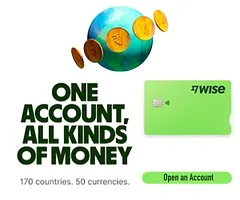BANK REWARDS PROGRAMS IN KENYA – HOW THEY WORK AND WHY BANKS OFFER THEM
In Kenya, bank points and rewards programs have become increasingly common as institutions compete to attract and retain customers. Every time a client uses a debit or credit card, pays bills digitally, or shops with partner merchants, they can earn points, miles, or cashback. These rewards can then be redeemed for goods, discounts, air tickets, or even direct bill payments. Leading banks such as KCB Bank, Equity Bank, Co-operative Bank, Absa Bank Kenya, and Standard Chartered Kenya all run reward schemes tailored to their customer base. This article explains how these programs work, which banks in Kenya provide them, and answers the key question: where does the money come from that allows banks to “give things away”?

How bank rewards programs work
Rewards programs are designed as loyalty tools to drive frequent use of cards and digital services. Each transaction generates revenue for the bank, and part of that income is reinvested into customer benefits. This creates a cycle where clients feel they gain extra value from everyday spending, while institutions reinforce trust and long-term relationships.
The basic mechanics
Most schemes award points for every shilling spent, automatically credited to the customer’s account. These points can later be redeemed for flights, electronics, shopping vouchers, or to offset bank charges. Increasingly, programs are linked to mobile apps and USSD platforms, making them easy to access even without a smartphone. Some banks also integrate with mobile money systems, allowing customers to redeem directly into wallets for bill payments or airtime top-ups.
Accumulate points through daily card or mobile purchases.
Redeem them for travel, shopping, utility payments, or airtime.
Unlock discounts and exclusive deals with partner merchants such as supermarkets, fuel stations, or telecom providers.
Benefit from seasonal promotions tied to national holidays, sporting events, or festivals.
For customers, the main value lies in getting tangible returns from daily transactions. For banks, the benefit is higher transaction volume, deeper engagement with digital channels, and cross-selling opportunities for loans, savings, or insurance products. However, it is essential to check details such as point expiry dates, redemption rules, and annual fees to ensure that the program delivers real value.
Banks with rewards programs
The growing competition in the financial sector has led many institutions to create loyalty programs that not only reward clients but also strengthen long-term relationships. These initiatives usually combine global practices, such as points-based systems and travel benefits, with local adaptations like supermarket discounts, bill payment offers, or airtime redemptions. Each bank positions its program to serve a specific type of customer, ranging from everyday spenders to high-net-worth individuals seeking premium travel perks.
Major financial institutions & programs
KCB Bank: runs a well-known loyalty initiative tied to both debit and credit card use. Customers accumulate points for daily purchases, utility payments, and digital transactions. These points can later be redeemed for shopping vouchers, airline tickets, or even cash credited back to accounts. The bank often enhances the value of the program with seasonal bonuses, limited-time campaigns, and promotions connected to local retailers or fuel stations, making it especially attractive for families and commuters.
Equity Bank: offers one of the most comprehensive reward structures through its Membership Rewards system. Clients earn points on domestic and international purchases, with bonuses available when certain spending thresholds are reached. The program is closely integrated with the bank’s mobile ecosystem, meaning customers can view, manage, and redeem their points directly through the app. Redemptions include goods, services, entertainment experiences, and premium travel benefits, making it versatile for both young professionals and established clients.
Co-operative Bank: focuses on everyday practicality, allowing customers to channel rewards toward bill payments, airtime purchases, and retail shopping. This approach makes the program highly relevant for households and individuals who prioritize reducing recurring expenses. Discounts and vouchers are often tied to supermarket chains, utility providers, and communication services, creating tangible daily value rather than aspirational benefits that only a few customers can use.
Absa Bank: offers a tiered reward experience depending on the card level. Entry-level cards provide cashbacks on local spending, while higher-tier cards include lifestyle privileges such as hotel discounts, dining experiences, and priority service at select merchants. Premium cardholders can access global travel perks, airport lounges, and concierge services. Absa also collaborates with local businesses to ensure clients see immediate savings at popular retail and dining outlets.
Standard Chartered: integrates its international 360° Rewards program with domestic redemption opportunities. Customers can convert accumulated points into travel bookings, retail vouchers, or discounts at partner outlets. Holders of premium cards enjoy additional services such as insurance cover, airport lounge access, and exclusive event invitations. The structure appeals to clients who travel frequently but still want to enjoy practical benefits within the local market.
I&M Bank: runs the Milele Rewards program, which assigns a clear monetary value to points and allows straightforward redemption. Clients earn points for every purchase, with higher returns on premium cards. Points can be exchanged for cashbacks, flight tickets, hotel bookings, or retail vouchers. The design of the program emphasizes transparency: customers always know how much value they are getting from each point, which increases trust and encourages more frequent use of cards.
Stanbic Bank: has positioned its rewards on lifestyle and travel. Customers enjoy cashback on transport bookings, discounts on airline tickets, and rewards for spending at entertainment venues. Premium products come with airport lounge access, travel insurance, and dedicated concierge services. Beyond travel, Stanbic collaborates with supermarkets and restaurants to provide relevant everyday discounts, ensuring that the rewards program appeals to a wide demographic of customers.
NCBA Bank: has gradually expanded its loyalty program, offering customers points on card transactions that can be redeemed for shopping vouchers and discounts at partner stores. NCBA places a strong emphasis on digital redemption, allowing clients to convert points into practical value directly from their mobile banking application. The program has become especially popular among younger customers who prefer seamless digital experiences.
All these programs differ in design but share the same underlying goal: to increase transaction volumes while deepening customer loyalty. Some focus on aspirational travel and lifestyle perks, others on tangible day-to-day savings. For clients, the best choice depends on spending habits, the type of rewards valued most, and the costs associated with maintaining the card. For banks, these schemes serve as powerful tools to strengthen digital engagement, expand partnerships with retailers and service providers, and ensure long-term profitability.
The origin of the benefits
One of the most common questions raised by clients is how banks can afford to offer flights, electronics, discounts, and other gifts without reducing their profits. The reality is that reward programs are not simple giveaways; they are structured business strategies designed to create long-term value. Instead of being an expense, these schemes operate as marketing investments that drive higher usage of financial products and deepen customer loyalty.
Sources of funding
Merchant commissions: every time a customer pays with a debit or credit card, the merchant pays a transaction fee. A portion of this fee is reinvested into the loyalty program, ensuring that frequent card use funds the rewards customers later enjoy.
Credit card interest and fees: when clients do not settle their balances in full, banks earn interest charges. Annual card fees and service charges also generate revenue, part of which helps finance reward structures. This balance ensures that the programs remain sustainable even when offering generous benefits.
Corporate partnerships: collaborations with supermarkets, airlines, telecom operators, and hospitality brands reduce the direct cost for banks. These partners benefit from increased visibility and new customers, while banks strengthen the attractiveness of their rewards catalogue.
Economies of scale: as more transactions flow through cards and digital platforms, total revenue rises. Higher volumes allow banks to dedicate a small percentage of earnings to reward schemes without affecting profitability. The cycle reinforces itself: the more clients use their cards, the greater the rewards available, and the stronger the loyalty effect.
Cross-selling opportunities: loyalty programs encourage customers to remain active with one institution, making them more likely to adopt additional services such as loans, mortgages, or insurance products. The extra revenue from these products indirectly sustains the reward ecosystem.
What appears to be a free gift is in fact a carefully designed exchange. Customers feel appreciated and motivated to use financial products more often, while banks secure higher revenues, deeper engagement, and stronger brand loyalty. This balance explains why reward programs continue to expand and why institutions constantly refine them to stay competitive. As digital adoption grows and more partnerships are created, the future of these schemes points toward greater personalization, broader redemption options, and integration with everyday life.








